Feeding and sheltering feral street cats.
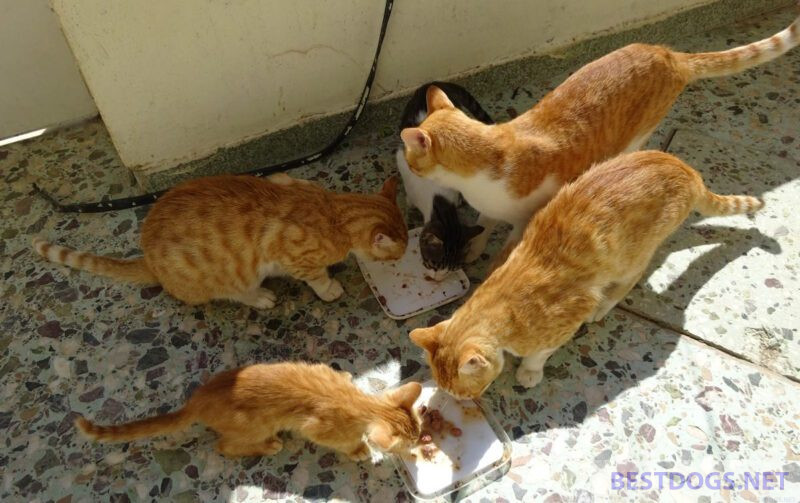

Sheltering street cats
Table of Contents
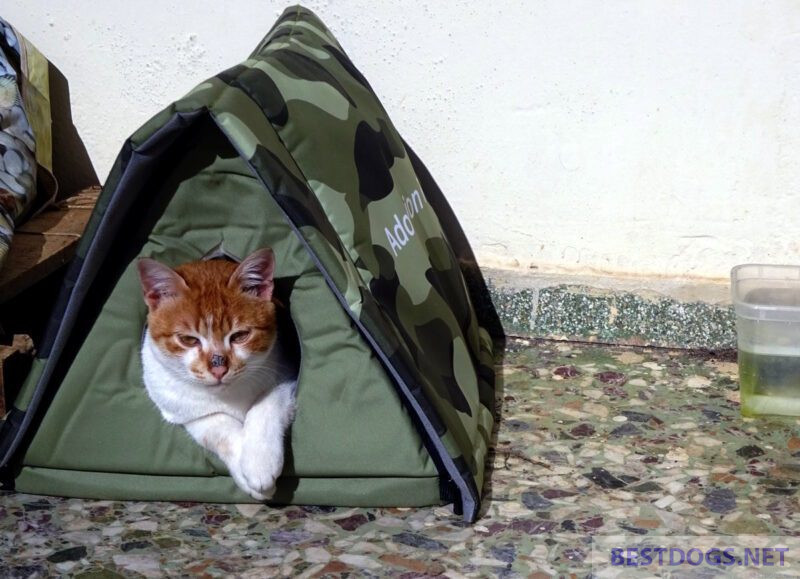
Almost all feral cats, although very tough and resourceful, cannot survive a severe cold. They may have a thick coat that keeps them a little warm during the day, but at night, when the temperatures drop more, they need our help.
Both feral cats and cats that live outside need warm, dry shelters that are adapted to their size to help them survive the cold season.
There are some outdoor cat houses that are designed for one cat (in different sizes: for a small/young, medium or large cat). However, if you are caring for a whole colony of cats, it does not make sense to house only one cat per cat house.
Although outdoor and street cats are almost always shy of strangers, most of them will take care of the other members of their colony. This makes it possible for a cat house to easily accommodate 3 to 4 cats, as long as there is enough space. Experience has shown that several cats like to cuddle up together in a cat house, however small it may be, and warm themselves additionally in this way.
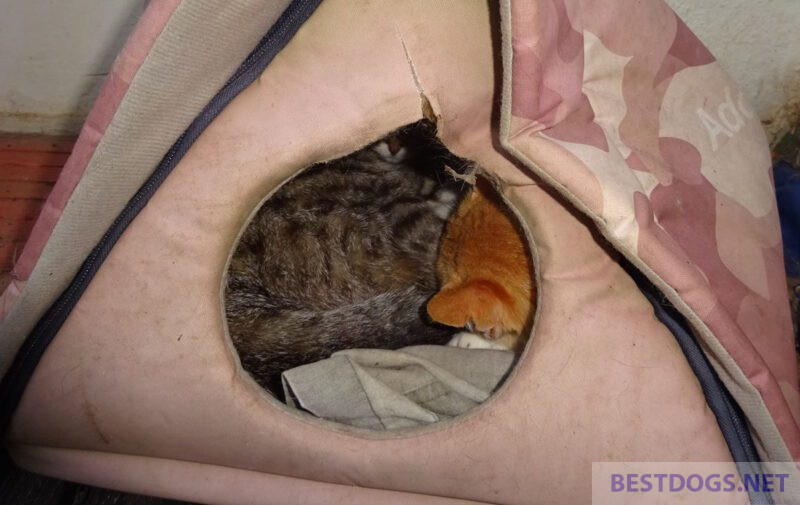
It is recommended not to use shelters that are made of plastic. They do not live in plastic houses either, and a helpless animal should not have to.
Shelters made of wood are ideal because it is a natural, environmentally friendly material for which cats have a natural preference. For cat lovers who are handy with a hammer and a saw and, if in doubt, don’t place much value on building style or aesthetics, there are a number of building instructions for animal shelters on the internet.
But for many people, the thrown-together and homemade construction is simply not appealing. The cats don’t mind, but the neighbours might!
Many communities require feral cats to be housed in shelters that look clean and tidy, so that the ambience and sight in the neighbourhood does not disturb other people too much.
For this reason, it is recommended that every colony in a populated area be equipped with professional cat houses and feeders.
A kind of tent as winter quarters for the cats: a discarded and weighted garden table with a waterproof plastic tarpaulin over it.
If a shelter is nevertheless to be self-built, please ensure that it is large enough to accommodate three to four cats – but narrow enough so that heat does not escape from it to the cat bodies.
If the shelter is too small, it restricts the cats’ freedom of movement too much, and if it is too large, the cats’ body heat cannot keep the room warm, rendering the cat house useless.
Although cat shelters can of course be homemade, there are also some suppliers who make cat shelters that are already well insulated and come with a guarantee. If you don’t want to go to the trouble of making a cat shelter yourself, you can always buy one of these. They last well and are worth the investment.
Some more tips for cat houses
Straw is the best option to furnish a cat house with. The cats burrow into the straw, and it acts as insulation to keep them warm during the cold nights. If straw is not available, pillowcases with shredded newspaper should be used. In extreme weather conditions, the walls and floor of the cat house should be padded with Mylar. These plastic sheets trap the heat of the cat in the cat house and keep the cats warm.
Finally, the floor of the cat house can also be covered with self-heating heat mats. These work with the cat’s own body temperature to keep them warm.
Purina Pro Plan Veterinary Supplements FortiFlora Dog Probiotic Supplement, Canine Nutritional Supplement - 30 Ct. Box
$30.99 (as of April 26, 2024 09:11 GMT +03:00 - More infoProduct prices and availability are accurate as of the date/time indicated and are subject to change. Any price and availability information displayed on [relevant Amazon Site(s), as applicable] at the time of purchase will apply to the purchase of this product.)Weruva B.F.F. OMG - Best Feline Friend Oh My Gravy!, Rainbow A Gogo Variety Pack! Cat Food, 3oz Pouch (Pack of 12)
$14.70 (as of April 26, 2024 09:11 GMT +03:00 - More infoProduct prices and availability are accurate as of the date/time indicated and are subject to change. Any price and availability information displayed on [relevant Amazon Site(s), as applicable] at the time of purchase will apply to the purchase of this product.)INABA Churu Cat Treats, Grain-Free, Lickable, Squeezable Creamy Purée Cat Treat/Topper with Vitamin E & Taurine, 0.5 Ounces Each Tube, 50 Tubes, Tuna & Chicken Variety
$29.99 (as of April 26, 2024 09:11 GMT +03:00 - More infoProduct prices and availability are accurate as of the date/time indicated and are subject to change. Any price and availability information displayed on [relevant Amazon Site(s), as applicable] at the time of purchase will apply to the purchase of this product.)When placing the cat houses, it should be noted that each shelter should be placed about 12 to 25 inch apart. Furthermore, they should be heavy enough to withstand a strong wind. Some of the cat houses on offer have loops on the sides or edges, with which they can be fastened with hooks into the ground or onto pallets. Pallets are also a good choice because they provide a raised platform above the cold ground and keep the cat houses attached to them warmer. They also repel wetness and moisture from rain and snowfall better.
The doors and entrances of the cat houses should face each other or be placed in a row. This way, cats can more easily find a free space without having to fight for it with other animals already inside.
Care must be taken to ensure that the shelters are always clean. Therefore, straw, old pieces of cloth or newspaper must be replaced if they are dirty or damp. Warming mats, pillowcases etc should be washed when necessary.
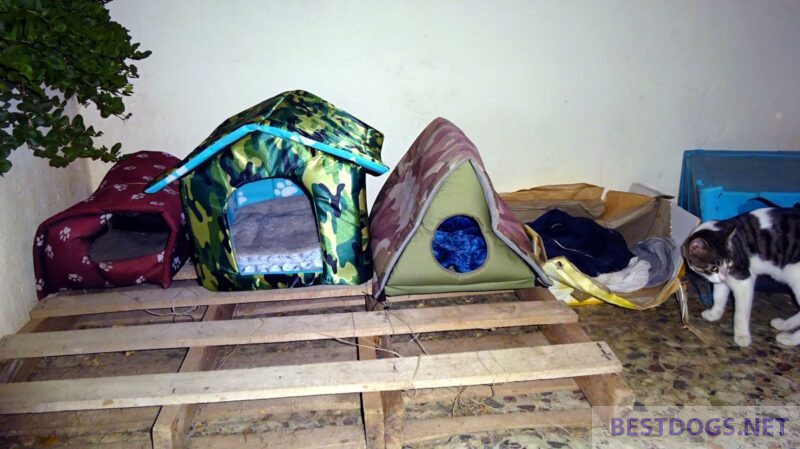
Some rules of conduct for cat houses
Do not use blankets, towels, old clothes or folded newspapers as insulation for the shelter. This is because the cat cannot crawl under them. As a result, these materials absorb the cat’s body heat.
Hay is also not a good choice because it is made of different types of plants and some cats may be allergic to it. It can also prick and irritate the cat.
Food or water should never be placed in the shelter as it may attract other wildlife, scavengers or stray dogs. Their visits will cause commotion and stress the cats.
In addition, the water inside the cat house could leak or spill over and endanger the health of the animals through dampness.
Instead, it is recommended to build a separate shelter for food and water. You can also build this yourself, but it should harmonise with the surroundings so as not to have any difficulties with neighbours.
Feeding street cats
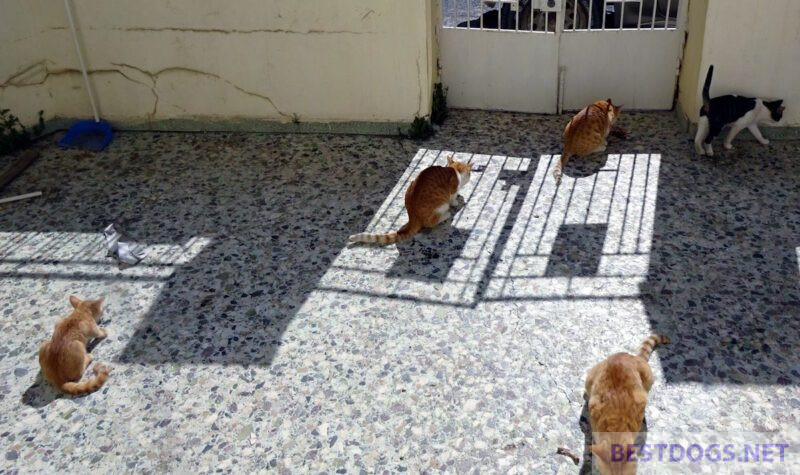
Food is the bonding agent between the carer and the street cats. Although these feral cats are suspicious of humans, feeding helps the cat overcome its fear and it learns to appreciate the caretaker.
Feral cats usually kill and eat mice, rats, vermin and small, weak birds that are in the neighbourhood and are therefore beneficial to the environment.
These cats therefore also like raw fish. However, it is usually the case that raw fish is not affordable for feeding street cats. If one lives near the sea where fishing is practised, it is possible to get small fish or fish scraps to feed the cats. However, it should always be kept in mind that fish can also spoil the cat’s stomach.
Therefore it is better to spoil them with cooked fish or the contents of tinned fish.
Cats basically love meat. Besides the taste, they need the protein for a strong heart and good eyesight. Cooked beef, chicken and fish provide the cat with all the nutrients it needs.
If money is tight, it is also possible to add oats and brown rice, wheat and barley. However, these ingredients must be ground before giving them to the cat.
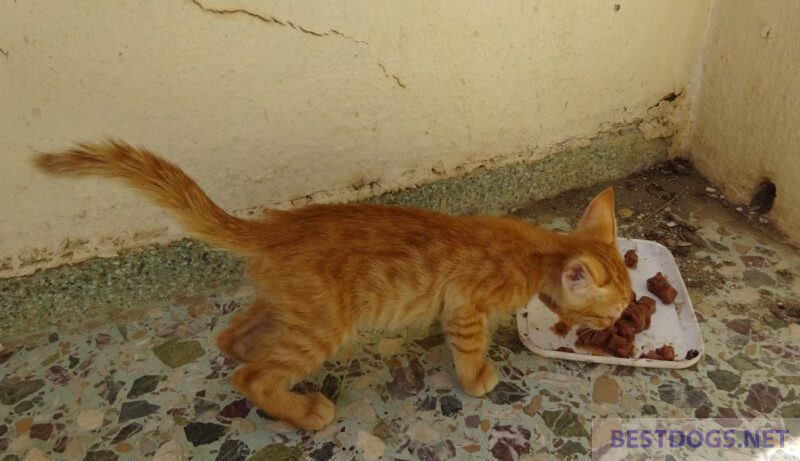
Eggs are also nutritious. However, you must make sure that the eggs are fully cooked before feeding them to the cats.
Vegetables are also a good source of food. However, like most human children, cats do not like the taste of vegetables or fruit. Therefore, it is best mixed in with food made from fish.
Cats should not be fed foods such as chocolate, grapes, sultanas, onions, garlic, bread dough or alcohol. If there is anyone out there getting cats drunk, they had better stop!
If the cats eat any of the above, you can be pretty sure that the vet will need to be visited soon.
But basically, most cats will eat pretty much anything that we humans eat. Therefore, it is not necessary to cook specifically for cats. Street cats will eat pretty much any food you give them, because they are not particularly picky.
Now that it has been established that cats like basically the same food that we eat as food, we also conclude that finances do not allow (unless you are a millionaire) to feed feral cats the same food that we eat ourselves.
Therefore, it is best to feed the feral cats with cat food from the pet shop. They will, of course, still go on their daily hunting adventures, supplementing their diet with whatever food is provided.
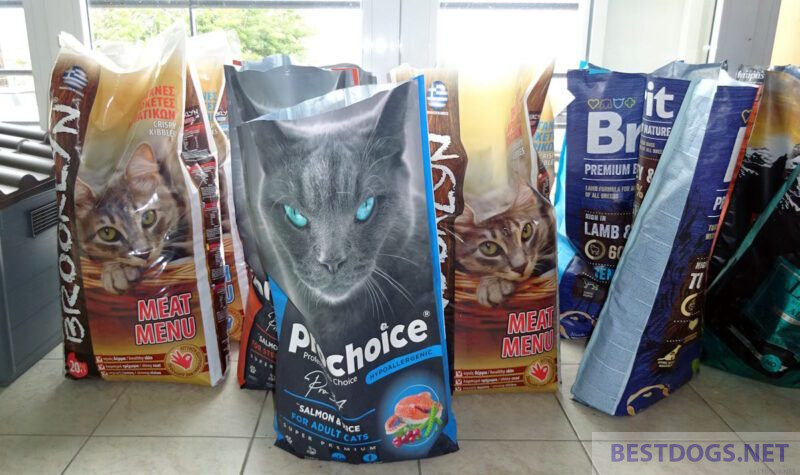
So, as the type of food given to the cats is basically not a problem, attention must be paid to the way in which the food is given to them.
It must be ensured that the feeding place is close to the shelter so that the cats do not have to travel too great a distance, exposing them to dangers from traffic, people or free-roaming dogs.
Since feral cats do not like the company of humans, the feeding station should be placed in a location where there is no traffic and minimal human interaction.
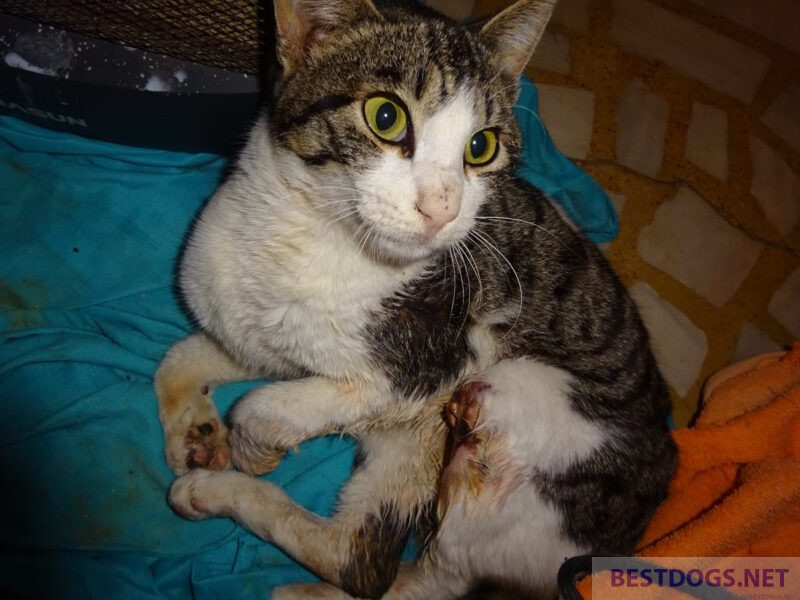
Please do not use extravagant feeding bowls. Simple steel containers or discarded cookware are best. If steel containers are not available, all containers should be without sharp edges and unbreakable.
If the number of cats in the colony is known, the bowls should be organised accordingly. For example, one bowl should be placed for every three cats and some space left between them to reduce the risk of food fights between the cats.
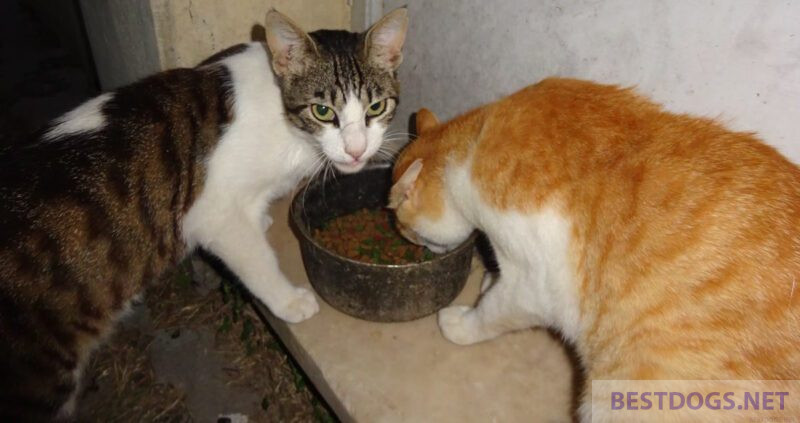
In addition, a large bowl should be placed for water only. This water should be freshly changed daily. Sometimes well-meaning people who feed street cats forget to also give water to their cat colony. When this is forgotten, the cats tend to move further away from the colony site to find water. In doing so, they may get into situations that endanger their lives.
The best time to refill food and replace water is at dusk. At this time, traffic is minimal and food does not spoil as quickly in the sun. Since cats are nocturnal animals and thus prefer the dark, they have no problems taking their meal in the dark.
As feral cats are generally shy towards humans, they will not come near the food bowl, even if only the keeper is around. Therefore, after the food is served, you should retreat and let the cats enjoy the sumptuous food you have put out for them.
Once they have learned to trust their keeper, their behaviour will change. They will come out and look expectantly at the bowls the keeper is holding.
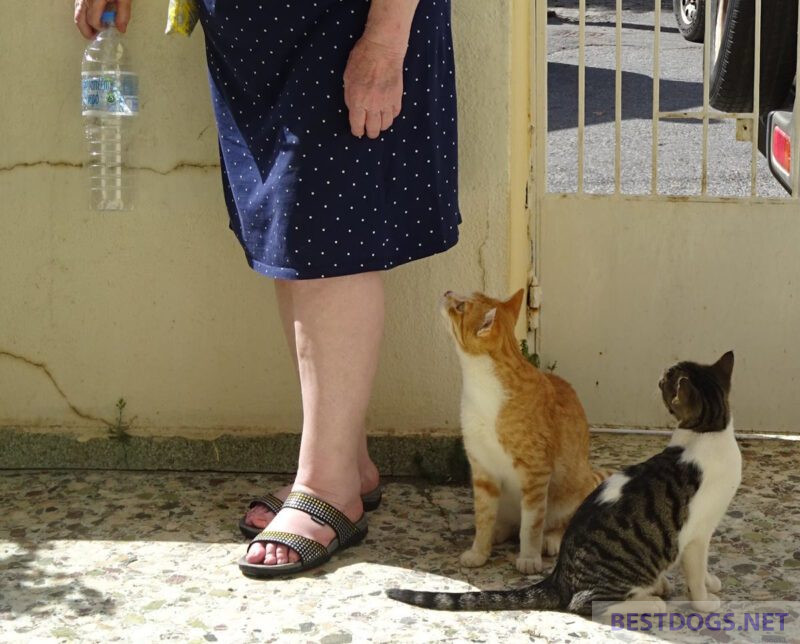
The cats should be given a signal when it is feeding time. This can be a whistle, a sung song or even a bell that is rung while the food is put down.
To begin with, the signal should be given while the food is being put down so that the cats associate it with the food. As well as improving your own vocal cords, cats will also associate a sung song more with their carer. You can also check the number of cats and whether any of them are sick or still need to be sterilised.
The best place to keep food for feral cats is in feeding stations or a feeding shelter so that it is safe from rain. The shelters should be turned so that they face each other.
Each food bowl and dish should be cleaned and disinfected every time the cats are fed. For one’s own protection, one’s own hands must also be washed with disinfectant each time there has been contact with the feral street cats.
A wildlife camera with infrared images and self-timer is suitable for counting and checking the cats that come to the feeding station at night:
Once you have decided to care for a colony of feral cats, you must also stand by your commitment. Cats have a keen sense of time and expect the carer to arrive with food at the designated time.
In the event of an extended absence, for example for holidays, a neighbour should be asked to take over these duties during that period. Another option would be to ask the local animal welfare organisation to feed the cats in the absence, which a volunteer can do.
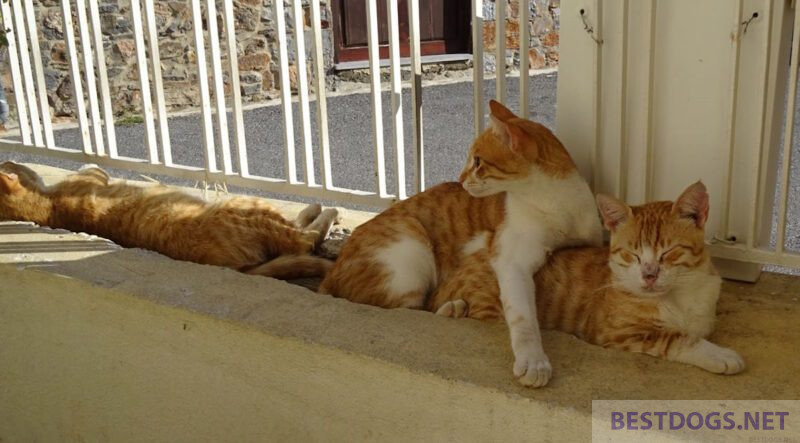



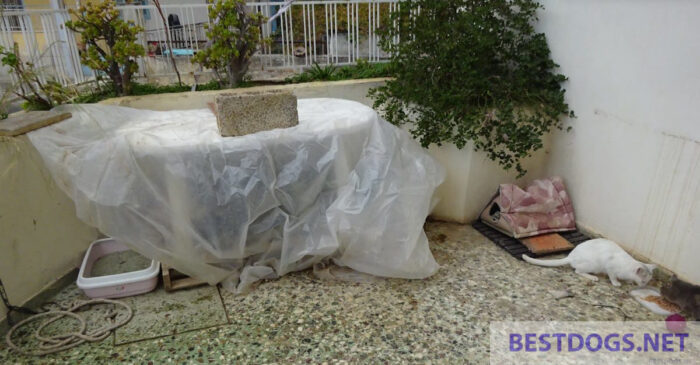
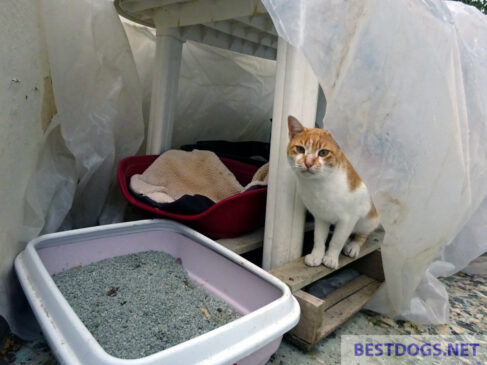



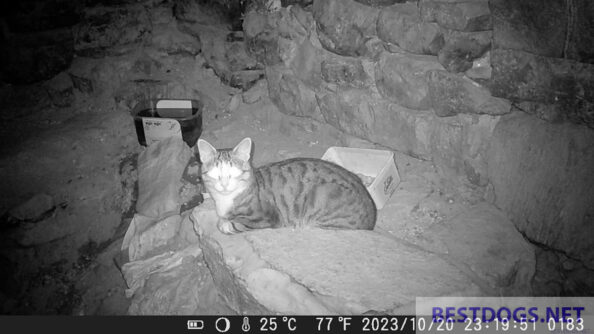
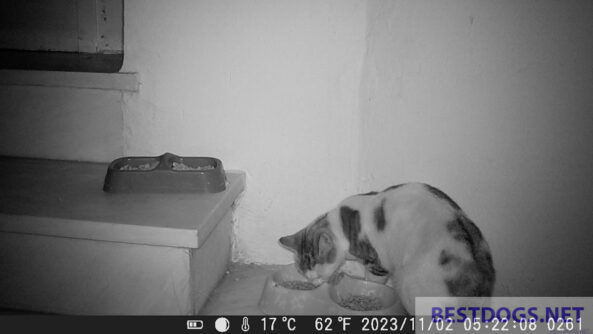

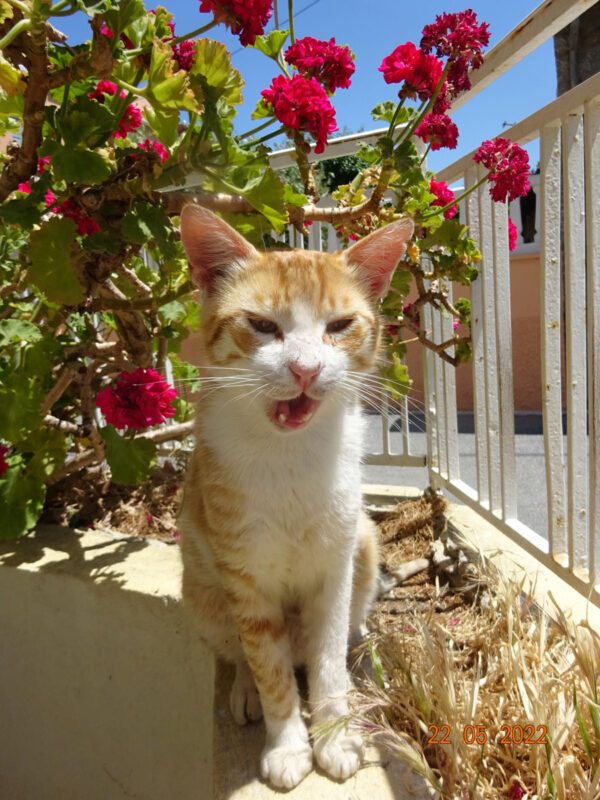
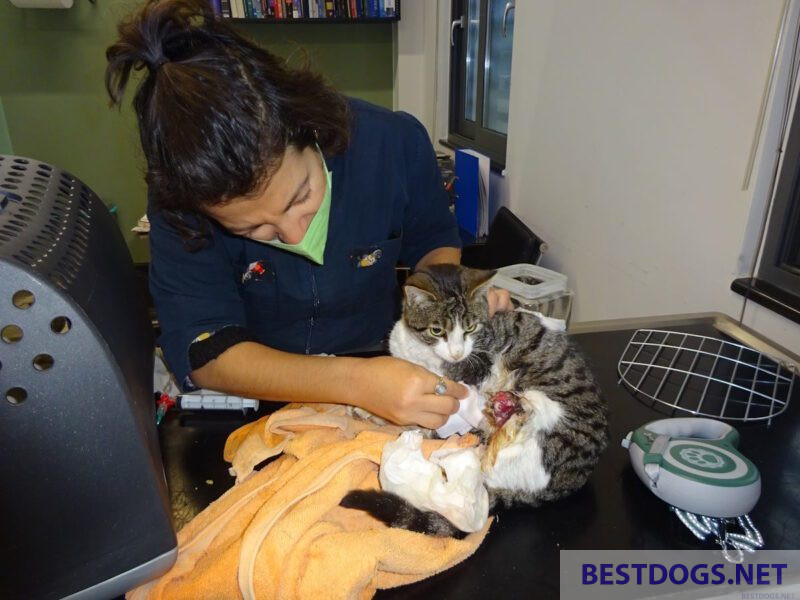
Hello. A month ago we lost a cat from the village of Kritsa. We still do not lose hope of finding it. and now on your website I saw a photo very similar to our cat. I don’t know how to contact you and whether to come and see it closer. can you help me with this?
Hi Natalia! Nearly all pics on this page are at least 6 months old and all cats on them are here around since 1 year or longer. They are in Neapoli.